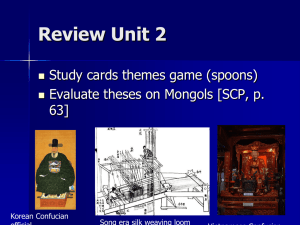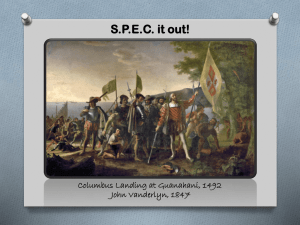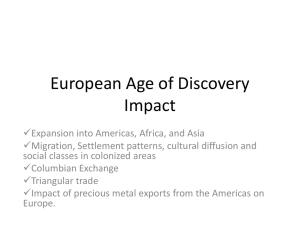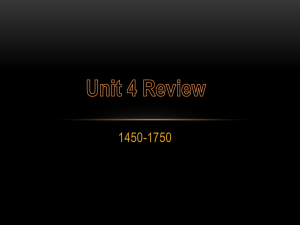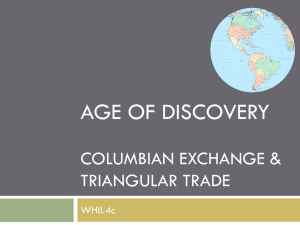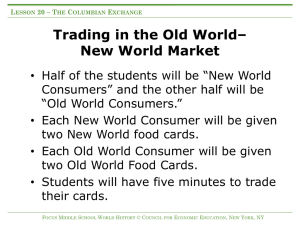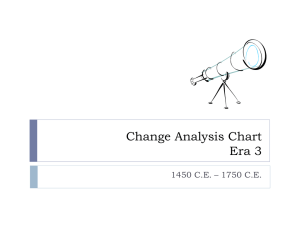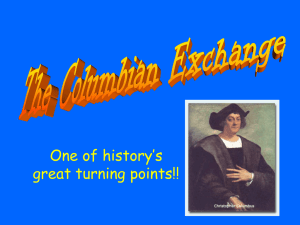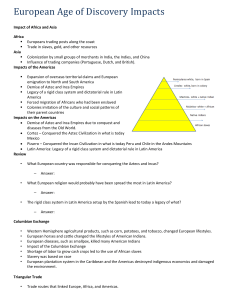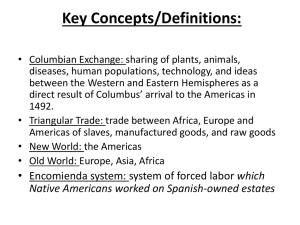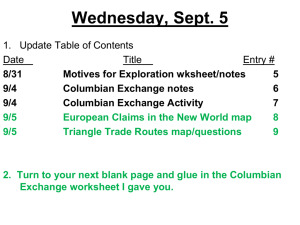Unit 4 Outline
advertisement
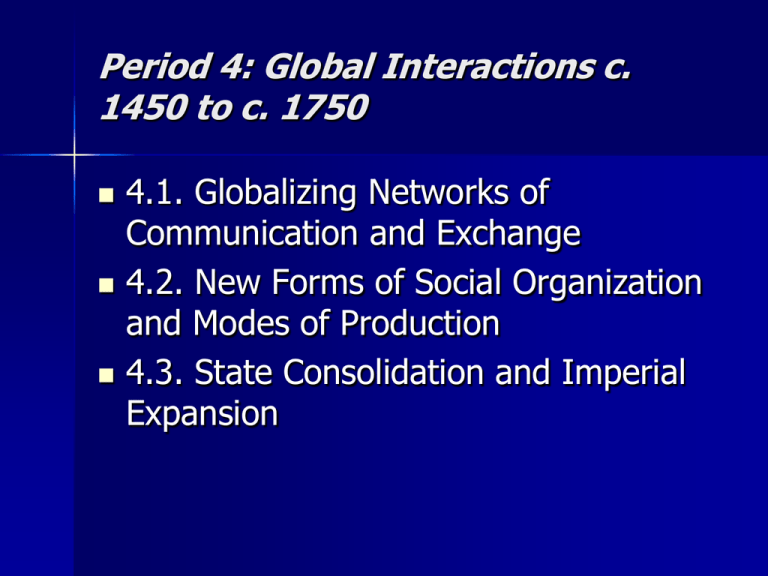
Period 4: Global Interactions c. 1450 to c. 1750 4.1. Globalizing Networks of Communication and Exchange 4.2. New Forms of Social Organization and Modes of Production 4.3. State Consolidation and Imperial Expansion Unit 4 Outline: Mapping the Columbian Exchange and thesis analysis Socratic Seminar on Gender: the Aztec and Inca Empires Analyzing cultural syncretism in the Americas Analyze changes and continuities in religions in Sub-Saharan Africa Ottoman, Safavid and Mughal Empires DBQ Unit #3: 1450 - 1750 Explain the Causes of World Population Growth, 1500-1800 CE 900 800 700 600 500 Millions 400 300 200 100 0 1500 1600 1700 1800 Unit #3: 1450 – 1750, binder p. 63 Six Weeks: Encounters and Change Week One: Encounters -- “Southernization” in Western Europe and the Scientific Revolution and Renaissance; Protestant Reformation and Catholic Counter Reformation Week Two: Encounters and Exchange: Reconquista, Portuguese in Morocco and West Africa; Spanish in the Americas Week Three: Encounters and Exchange: Portuguese in Indian Ocean trade networks, Manila galleons and the Ming Silver Trade Timed writing: DBQ on Global Flow of Silver (2006 exam) Week Four: Labor Systems in the Atlantic World -- The Africanization of the Americas (slave trade, plantation economies, resistance to slavery); Labor systems in the Russian Empire and resistance to serfdom Timed writing: Compare labor systems (2004 exam) Week Five: Expansion of Global Economy and Absolutism-Ottoman, Safavid, Mughal, Bourbons, Tokugawa, and Romanov Empires Week Six: Effects of the Atlantic Slave Trade on demography in West Africa, resistance to the Atlantic slave trade, and expansion of Islam in sub-Saharan Africa Timed writing: Change and continuity over time essay on effects of Columbian Exchange (2005 exam) Map Quiz: Map the flow of flora, fauna, and people caused by the Unit Test Columbian Exchange Directions for Mapping the Columbian Exchange, p. 65 an outline map of the world and then place the following items in the hemisphere of their origin: Draw Eastern Hemisphere cows sheep pigs horses wheat rice cotton silk sugar coffee measles small pox chicken pox influenza bubonic plague Western Hemisphere turkey llama tobacco chocolate (cacao) corn (maize) squash beans chilies potatoes tomatoes •Draw lines showing where the items went (they all should travel to the other hemisphere, except for llamas). •Paste index cards or sticky notes with annotations on the map explaining the effects of the plants and animals transferred across the world as a result of the Columbian Exchange •Write a thesis statement describing the changes and continuities that resulted from the Columbian Exchange Thesis Statement on the Columbian Exchange [scp, p. 72] 2012 Comparative Essay Generic rubric Operational rubric Score essays CCOT Labor Systems in Africa [SCP, p. 67] Seminar on Gender in the Americas [SCP,p. 71] Creating New Cultures in the Americas [scp, p. 74] Religious Change in Latin America In Mexico today, there is a holiday known as the Day of the Dead or El Día de los Muertos Syncretism in Latin American Music The Islamic Empires in the 16th & 17th Centuries DBQ on training wheels [Cohen binder, p. 76] Essay Question: “Compare the development of empire-building from 1450 – 1750 in two of the following empires: Spanish, Ottoman, and/or Russian” [Cohen binder, p. 82] By the way, who are these guys? How do you know? By the way, who are these guys? How do you know? Peter, tsar of Russia from 1682 to 1725. Phillip II, king of Spain, 1527 - 1598 Suleiman the sultan of the Ottoman Empire from 1520-66.
